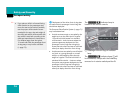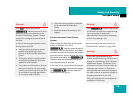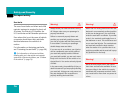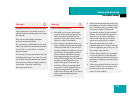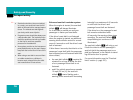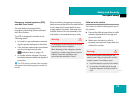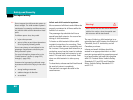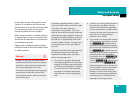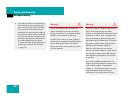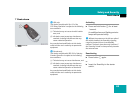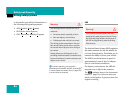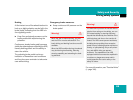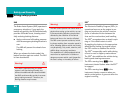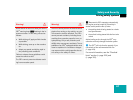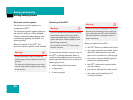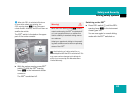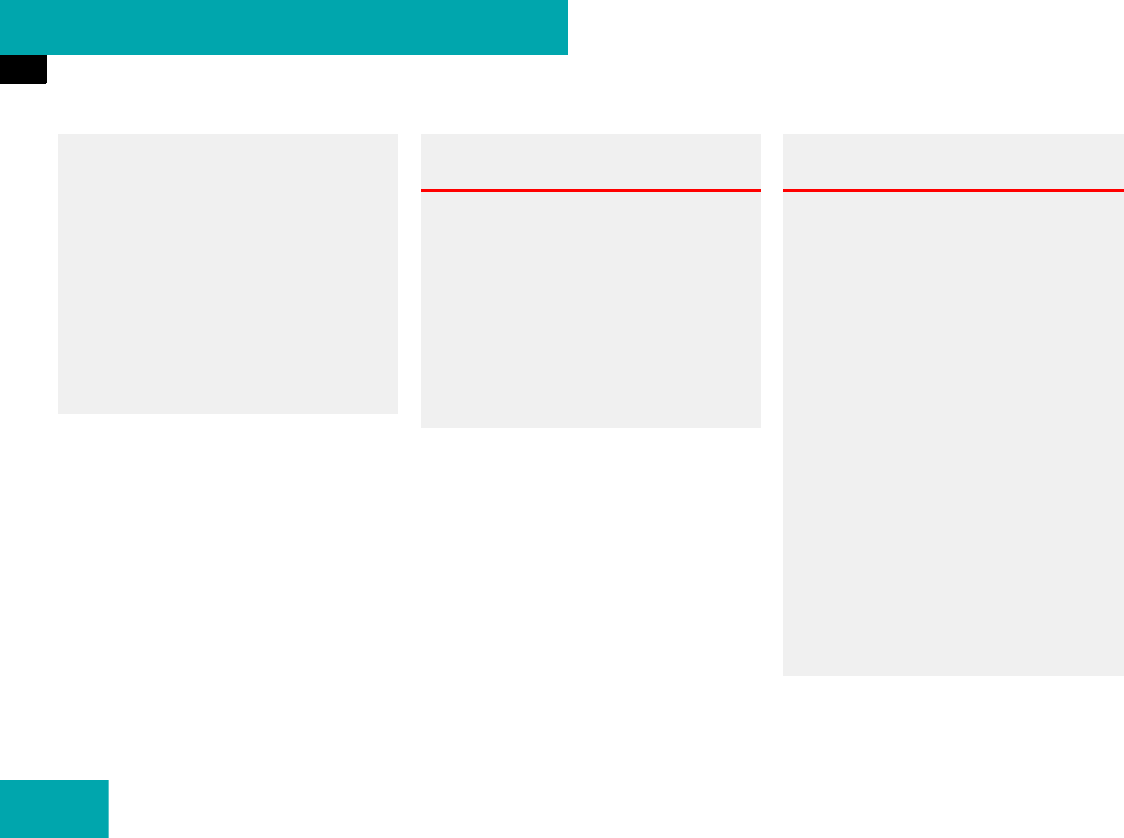
82
Safety and Security
Occupant safety
ț If you place a child in a forward-facing
child restraint on the passenger seat,
move the seat as far back as possible,
use the proper child restraint recom-
mended for the age, size and weight of
the child, and secure child restraint with
the vehicle’s seat belt according to the
child seat manufacturer’s instructions.
For children larger than the typical
12-month-old child, the passenger front
air bag may or may not be activated
(
୴ page 72).
Warning! G
Infants and small children should never
share a seat belt with another occupant.
During an accident, they could be crushed
between the occupant and seat belt.
A child’s risk of serious or fatal injuries is
significantly increased if the child restraints
are not properly secured in the vehicle
and/or the child is not properly secured in
the child restraint.
Warning! G
Children too big for a toddler restraint must
ride in seats using regular seat belts.
Position the shoulder belt across chest and
shoulder, not face or neck. A booster seat
may be necessary to achieve proper seat
belt positioning for children over 41 lbs until
they reach a height where a lap/shoulder
belt fits properly without a booster.
When the child restraint is not in use,
remove it from the vehicle or secure it with
the seat belt to prevent the child restraint
from becoming a projectile in the event of
an accident.
Do not leave children unattended in the
vehicle, even if the children are secured in a
child restraint system. Unsupervised
children in a child restraint system may use
vehicle equipment and may cause an
accident and/or serious personal injury.
୴୴



